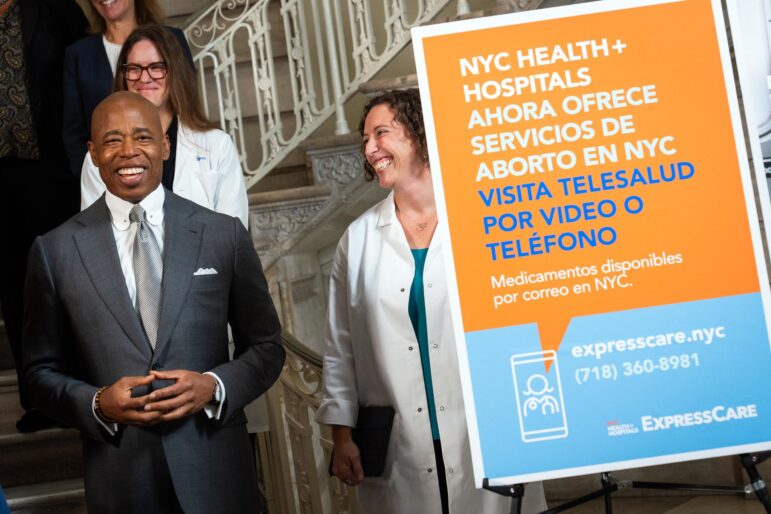After gradually gathering credibility and political currency over the past decade in New York, the phrase “sector development” is suddenly on the tip of everyone’s tongue. The City Council has held hearings about it. The current administration appears to be positioning for a policy shift toward it. Even the plans for the redevelopment of Lower Manhattan incorporate the concept.
Overall, this is a very positive transformation. Implementing sectoral development programs will help put public resources to work where they will do the most good–creating the most new jobs. As the former head of the Garment Industry Development Corporation (GIDC)–one of the first public-private, labor-management sectoral initiatives in the country–and the developer of several other sectoral projects in the city, I include myself as a supporter. However, before putting sectoral initiatives into widespread practice in New York, it is worth pausing to assess what they can and cannot do, and to set the right expectations for such efforts. A false start will not only squander good will and money, as well as fail to produce jobs or strengthen industries, but it would also discredit an important economic development strategy that could advance the city for decades to come.
What follow are some lessons from the field.
A sectoral approach to economic development–that is, one that seeks to foster and support an entire industry through broad-based collaborations within an economic “sector”–has some undeniable strengths. As compared to tax breaks for individual companies, sector development can be an effective way to improve an industry’s overall competitiveness, to anchor that industry to the surrounding community, and to assist small and medium-sized businesses, which are the generators of new jobs but have long received scant attention from economic development policymakers. Sectoral strategies do not subsidize one company over its competition, and there is an inherent fairness to this approach.
In addition, by focusing on a whole industry, an economic development agency can achieve an economy of scale, serving enough companies with similar needs to make developing a high level of industry expertise worthwhile. For example, one of the most popular programs of the GIDC is a class for managers in sewing-machine repair. Another example is at the Greenpoint Manufacturing and Design Center (GMDC), where small woodworking companies are able to share sophisticated equipment to which they would not otherwise have access.
This leads to the first rule of a successful sectoral approach:
1) Choose wisely
Sector-based strategies are tailor-made for addressing issues that are unique to an industry or that benefit from such economies of scale. Not all industries, however, fit neatly into this model.
Neither the fur nor the leather industries, for example, would be likely to generate enough jobs to be worth the public-sector investment. On the other end of the spectrum, a sector as vast as retailing might be too diverse to be served by an overarching sector-based initiative. In general, issues such as sanitation, security, transportation, and basic work-readiness training might be better addressed another way, such as through a geographically based local development corporation.
What does make a sector a good candidate for this type of strategy? Some preliminary questions to consider include: Is the industry large enough to justify public investment? Is there growth potential? What kind of jobs will be created, and what skills will they require? Are there enough businesses with shared needs to make the effort worthwhile?
An ideal industry for this type of approach would not only fit a general paradigm, however–it would also be a sector which New York already offers a competitive advantage over other locales.
At the New York Industrial Retention Network (NYIRN), where I’m currently director, we are now in the process of launching Food From New York, a sectoral initiative in the food manufacturing sector. We selected the food industry because it meets a broad range of criteria:
- • New York offers competitive advantages for food producers because of its proximity to a dense market;
• New York’s diversity–literally dozens of specialty ethnic sub-markets–stimulates new product development and creates entrepreneurial opportunities;
• Growing national demand for specialty foods creates export opportunities; and
• The food industry offers a large number of entry-level jobs.
Prior to working with NYIRN, I served as director of economic development at the Manhattan Borough President’s Office, where we pursued a sectoral initiative in the diamond and jewelry industries. We selected the diamond and jewelry industries for a number of reasons: First, the number of jobs generated by businesses in the supply chain was big, approximately 30,000 in either manufacturing, wholesaling or retailing in New York City. Second, the “value added” by the business operations in New York was high: the workforce was highly skilled; design was critical to production; and the industry is space-efficient. These factors suggested that the industry was well-suited for New York’s high-cost environment. Third, the industry was composed of hundreds of small businesses and fragmented among many different trade associations. Finally, the industry had been virtually ignored by the city, despite the wealth it generated and its extraordinary concentration along 47th Street.
In the diamond and jewelry field, the city offers an abundance of design talent; the ability to trade internationally; and a culture of tolerance, making it a livable place for the many Orthodox Jews who work in the sector.
2) Share the driving
Probably the most important, and most difficult, step for any third party organizing a sectoral initiative is to “let go”–that is, to relinquish some control in order to build a true collaboration. This is lesson No. 2: The city must bring representatives of the client industries into the decision-making process at all levels and stages, from assessing the problems to designing the programs. This will earn good will and help get the industry invested in the process.
At the Manhattan Borough President’s Office, we began the diamond and jewelry industries initiative with a study that was both a research project and an organizing tool. Our objective was not only to assess the economic impact of the industries, but to engage the leadership, to build industry-consciousness and cohesiveness, and to offer a vision of what participants might gain from a partnership with government and with one another.
We created an advisory board composed of the directors of each trade association and the major institutions within the industry. Every mailing had the board members’ names on it and was sent out from each association. The board helped design the study and the methods for conducting the survey, and helped interpret the findings and determine the recommendations. They even issued the press releases. The result was the creation of a development corporation to provide services to the industry citywide, and a business improvement district to provide security and marketing for the core of the industry on 47th Street.
What the city will lose in control it will gain in industry resources, including time, money and expertise. When I was at GIDC, the organizations on the board not only helped to design the programs, they also marketed those programs to their members, recruited and placed graduates of training programs, and contributed money and equipment.
In particular, the city cannot impose a solution on a problem simply because it has a program it wants to promote or shoehorn in. For example, also at GIDC, a Department of Employment representative once convinced a reluctant board that the agency should try to train long-term welfare recipients in industrial sewing in an eight-week program, because the city agency needed to move people off welfare. Not one participant was placed, because it was impossible to train people in that short a time frame.
An alternative, less hands-on approach to actually organizing an industry would be for the city to create a fund to support industry efforts to generate their own sectoral projects. For example, the city could award grants to industry collaborations through a competitive request-for-proposals process. Criteria for the award might include: 1) the inclusiveness of the proposal, both in terms of the ability of many companies to benefit, and the opportunity for a range of stakeholders (including organized labor) to participate in the decision-making process; 2) what the industry would be willing to commit in terms of time, money and other resources; and 3) the potential impact on the long-term competitiveness of participating companies. Awards should be multi-year, to provide ongoing support.
3) Commit senior management time
If the city wants an industry’s leadership to be engaged, then senior government people must participate as well. Equally important, in order to address problems in meaningful ways, and for the city to get the most benefit out of an industry collaboration, representatives of all the relevant agencies–which typically include the departments of Business Services, Employment and City Planning, as well as the Economic Development Corporation–must be present.
Having all the key players involved in the process creates a mechanism for ongoing communication between government and an industry; provides a forum for the industry to debate its needs and set its priorities; and allows the industry and government to develop a shared understanding of the issues, as well as of the limits of what government can do.
4) Include labor
Including representatives of labor organizations may raise fears among some owners and trade groups, but their early participation in a sectoral initiative is crucial. Labor is an obvious stakeholder and can provide both insight into the challenges confronting an industry and political clout with policymakers, which may be essential to the sustainability of the initiative. Training and work practices will inevitably be examined at some point, and labor’s participation in addressing these issues is necessary. That participation will come much easier if labor groups have already helped shape the vision, define the issues and develop the programs.
5) Be prepared for the long haul
A sectoral strategy is a long-term investment that may not show immediate benefits or produce quantitative results. A successful project might eventually result in the sharing of equipment or collaboration in marketing, both of which require a lot of gradual relationship-building, and neither of which can be easily evaluated in terms of impact.
For example, the NYIRN began its Food From New York initiative three years ago with a study assessing the economic impact and needs of the industry. While we have helped many individual food companies along the way with real estate and financing services, only this year do we expect to have industry-specific programs, such as marketing assistance and a natural-gas-buying co-op.
When evaluating sectoral strategies, progress can be measured in terms of process milestones or goals such as the creation of an industry governing board, the development of a mission and vision statement, or the organization of industry events.
Adopting a sectoral approach to economic development is not a silver-bullet solution to our economic woes, nor will it succeed without certain sacrifices. Implementing such a strategy will require public investments that might not yield returns for several years–a difficult decision for any elected official who must show results within a short election term. It will require sharing the decision-making and sharing the spotlight.
However, if they are given a chance, sectoral strategies can effectively channel resources into small and medium-sized businesses, spurring them to create jobs. By including industry leaders from the beginning, and by concentrating on the shared needs of a significant number of businesses in a given industry, sectoral strategies can also ensure that the real issues of a whole sector are being addressed through appropriate programs. This will make the city a valuable partner, which will in turn help to make New York the location of choice for a diverse array of industries for decades to come.
Adam Friedman is executive director of the New York Industrial Retention Network, a citywide organization that seeks to promote a diverse economy that includes manufacturing.








